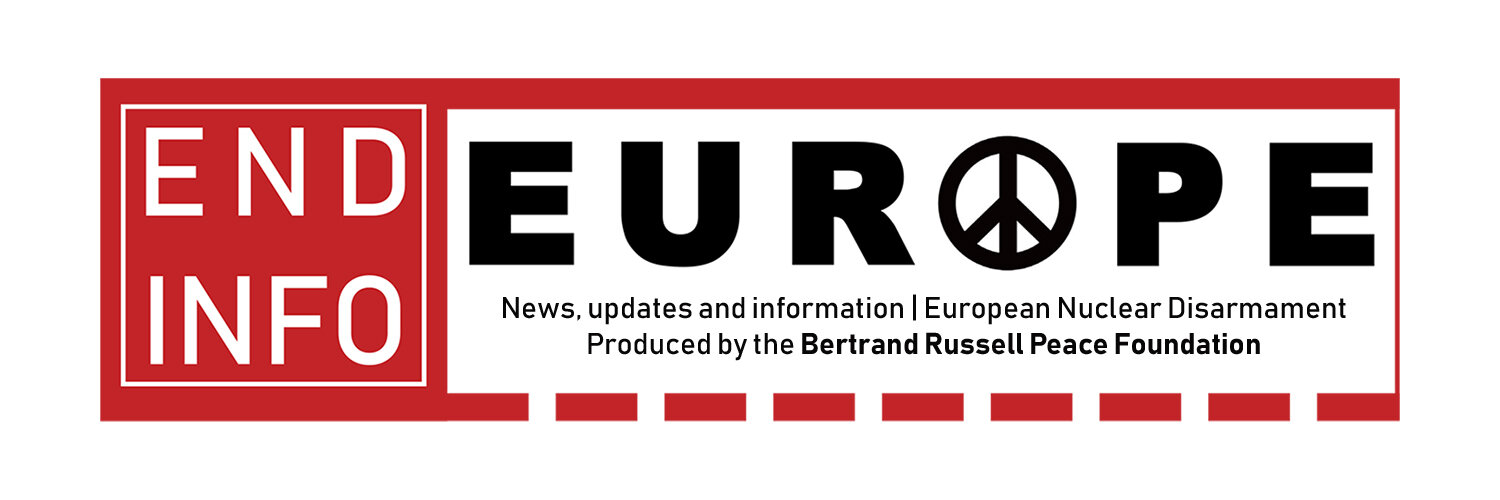Nuclear sharing: the facts
NATO isn’t particularly shy about stating the basic facts about its role with regards to nuclear weapons.
From END Info 22 | February 2021. Download here
The ‘NATO Nuclear Deterrence’ fact sheet, available on NATOs website, states the following:
Three NATO members - the United States, France and the United Kingdom – have nuclear weapons.
The strategic forces of the Alliance, particularly those of the United States, are the supreme guarantee of the Alliance’s security. The independent strategic nuclear forces of the United Kingdom and France have a deterrent role of their own and contribute significantly to the overall security of the Alliance.
NATO’s nuclear deterrence also relies on US nuclear weapons deployed in Europe and supporting capabilities and infrastructure provided by Allies. A number of European NATO members have dual-capable aircraft dedicated to the delivery of these US nuclear weapons. The United States maintains full custody of these weapons at all times. These “nuclear-sharing arrangements” predate and are fully consistent with the Non-Proliferation Treaty. [emphasis added]
From characterising the combined nuclear forces of the US, UK and France as ‘NATO’s nuclear deterrence’ to confirming that supposedly non-nuclear armed states can ‘deliver’ - in the euphemism favoured by advocated of nuclear weapons - NATO is proud to confirm the basic extent of its ability to wipe life from the surface of the planet.
What NATO is less keen to reveal are the locations and extent of the US nuclear weapons in Europe. So where are they, how many of them are there, why are they there and what risks to they present to local populations and to Europe as a whole?
Where and how many?
The location of these US weapons has been an ‘open secret’ for some time. More recently, NATO itself revealed the locations after accidentally posting a report on its website. Here’s a run-down:
Netherlands: Up to 20 nuclear bombs are stored in The Netherlands at the Volkel airbase.
Belgium: Up to 20 nuclear bombs are stored in Belgium at the Kleine Brogel airbase. Belgium is also home to NATOs HQ.
Germany: Up to 20 nuclear bombs are stored at the Buchel airbase in Germany. Germany is also home to a large number of US armed forces.
Italy: Around 70 nuclear bombs are stored at the Aviano and Ghedi-Torre airbases in Italy. Some of these bombs were previously stored at RAF Lakenheath in the UK prior to their withdrawal in 2008.
Turkey: It is estimated that 50 nuclear bombs are stored at the Incirlick airbase in Turkey.
Total: up to 180.
Why are they here?
Dates and extent of deployment varies, but the presence of these weapons in Europe can be thought of in two ways: first, as a ‘hangover’ from the ‘Cold War’ and second, as a demonstration of the continuing centrality of nuclear weapons to NATO’s overall strategy for Europe and neighbouring regions.
In the case of Germany, it has been suggested that ‘nuclear sharing’ was initiated after threats from the German government to pursue their own nuclear weapon developments. The location of US nuclear bombs in Turkey is a clear consequence of the strategic importance placed on the region to the south of that country.
The presence of US nuclear bombs in Belgium, The Netherlands and Italy is clear demonstration that these states are closely tied into the US/NATO military alliance.
What are the risks?
Many people feel that the presence of such weapons creates a ‘target’ of potential aggressors. Moreover, nuclear material - in whatever form - is never ‘risk free’. The dangers of malfunction in an atomic weapons are all the more pronounced. This is why a growing number of people demand an end to ‘nuclear sharing’ and the removal of these bombs.
Such a move would be an important first step towards a nuclear-weapon-free zone across the whole of Europe.

